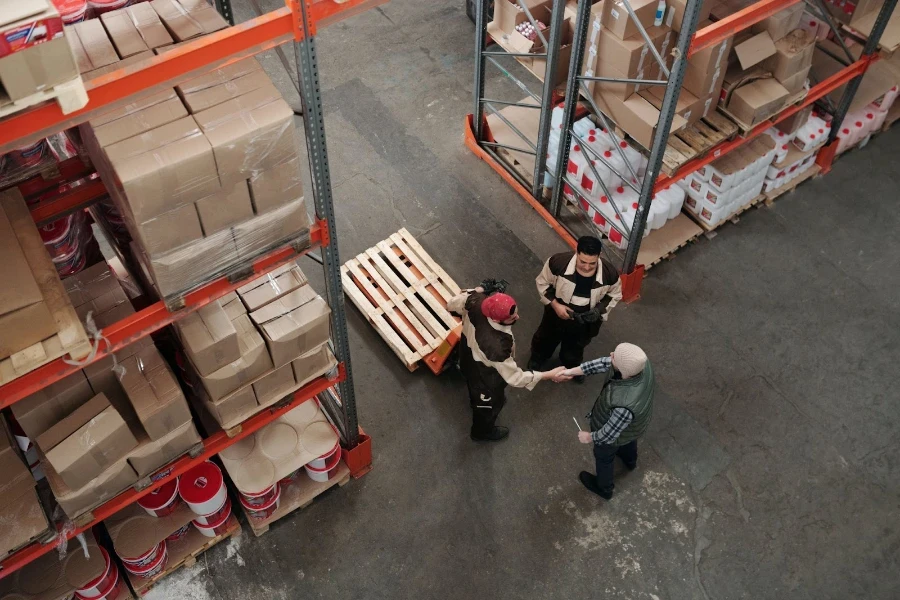Warehousing is widely recognized as one of the most sizable costs in the fulfillment process of e-commerce, largely owing to the extensive processes and various associated expenses involved. Globally, the primary costs in warehousing extend beyond storage, utilities, labor, maintenance, distribution center expenses, and additional items such as insurance and adherence to strict building codes.
High real estate prices in certain areas further exacerbate the financial burden of warehousing, yet thankfully, all these challenges may now have a viable solution with the emergence of on-demand warehousing — a solution that promises flexible storage arrangements. Proceed to discover the intricacies behind this solution, including its features, how it differs from the traditional warehousing methods, its operation mechanisms, as well as its benefits and risks, all within the context of e-commerce.
Table of Contents
Understanding on-demand warehousing
Traditional warehousing vs on-demand warehousing
How on-demand warehousing works for e-commerce
Benefits of on-demand warehousing for e-commerce
Assessing risks and challenges of on-demand warehousing for e-commerce
Substantial storage flexibility
Understanding on-demand warehousing
Tapping on the concept of the “sharing economy,” on-demand warehousing is essentially the “Uber” or “DoorDash” for warehouse networks, allowing companies with extra space to rent it out as an on-demand warehouse, benefiting both tenants and space owners financially. Yet, at the same time, on-demand warehousing offers more than just sharing; True to its name, the term “on-demand” implies instant, ready-to-use, customizable “available upon order” types of services.
Sharing their roots in both marketplace-like platform operation and consumer expectations for fast and flexible digital services, e-commerce activities are highly relevant to the sharing economy, making the on-demand warehousing concept one of the vital resources for e-commerce merchants.
Traditional warehousing vs on-demand warehousing
The concepts of traditional warehousing and on-demand warehousing are distinctively different in several aspects, including commercial terms, pricing structure, availability, and technological infrastructure.
Commercial terms and pricing structure are often the most evident differences between traditional and on-demand warehousing concepts. These typically involve contrasting approaches, such as long versus short contract terms and fixed, minimum pricing versus more flexible arrangements like on a pay-per-use basis or charging pay-as-you-go fees.
In terms of availability, traditional warehousing often involves a central location or a limited number of warehouses, whereas on-demand warehousing, through its online marketplace nature, gathers a widespread network of facilities and distribution/fulfillment centers.
Meanwhile, from a technological Infrastructure perspective, existing warehousing companies, whether private, public warehouses or those run by the 3PL (third-party logistics providers), might struggle to keep pace with the typically cloud-based, modern on-demand warehousing services, given their reliance on long-established, hardware/software-dependent warehouse management technology.
The agile approach of on-demand warehousing is exemplified by secure software solutions and continual innovations in order processing, inventory management, and billing systems, highlighting their emphasis on delivering fresh, innovative services.
How on-demand warehousing works for e-commerce
Similar to other businesses in the sharing economy, on-demand warehousing operates by connecting online retailers (or other types of businesses) with warehouse providers through digital platforms or marketplaces. Retailers can easily select and book warehouse space and services by comparing various options. Warehouse providers list their available space, set prices, and define terms while efficiently managing bookings. Once booked, retailers send their inventory to these warehouses for secure storage and streamlined management.
Many warehouse providers also oversee essential fulfillment services, such as picking and packing of goods, repackaging, as well as shipping orders to end customers. Using advanced applications and cloud-based features, users can monitor their inventory and track orders seamlessly through the online platform, receiving valuable analytics insights throughout the process. Some modern warehouse operators also utilize the latest drone technology to achieve greater efficiency and accuracy.
Benefits of on-demand warehousing for e-commerce
The on-demand warehousing model, with its low or no long-term contract requirements, offers a flexible pay-per-use option that directly demonstrates its cost-effectiveness compared to traditional warehousing. This approach is particularly advantageous for adapting to fluctuating market demands and temporary storage needs, providing a scalable solution for new digital brands, and addressing rising warehousing costs, especially in prime areas.
Furthermore, the foundation of on-demand warehousing lies in the efficient and optimized use of excess space. Approximately 70% of warehouse survey respondents have reported periods when their storage space significantly exceeds inventory, illustrating the cost-efficiency of this new model. By utilizing excess capacity through space sharing, on-demand warehousing enhances supply chain management resilience. It also serves as an ideal solution to support goal-specific operations like exploring new markets or inventories, underlining its cost-efficiency and flexibility.
The extensive network supported by most on-demand warehousing marketplaces adds to its versatility and expansiveness. This network allows online retailers to move beyond the constraints of a single warehouse or limited options, enhancing their ability to expand into new markets.
Ultimately, the real-time tracking and management capabilities of these online platforms offer a level of transparency and efficiency not typically found in traditional warehousing. This feature, which includes intuitive and systematic online marketplace functionalities, presents significant advantages over traditional warehouses, which often offer only standard storage space and functions.
Assessing risks and challenges of on-demand warehousing for e-commerce
Just like every medal has a reverse side, on-demand warehousing in e-commerce, despite its advantages, comes with its own set of risks and challenges. Notably, availability and priority issues can be especially apparent during seasonal peaks or high-demand periods. During these times, warehouses, including those run by 3PL providers, can be extremely busy, leading to possible prioritization conflicts and reduced availability, or increased costs for on-demand services.
Communication complexities and potential delays are the other two critical factors impacting customer service and user experience. Such issues are often unavoidable as users primarily interact through on-demand warehousing platforms, limiting direct communication with warehouse providers. Additionally, the nature of on-demand warehousing leads to extra charges for various services, which are now segmented into optional features and potentially add up to higher overall costs.
Finally, the inherent complexities in line with indirect communication channels and the array of payable options imply that on-demand warehousing might be more suitable for straightforward, direct shipments that require less customization and fewer specialized services instead.
Substantial storage flexibility

The on-demand warehousing model, inspired by the sharing economy, offers remarkable customization and the ability to split orders into fine details. This approach contrasts traditional warehousing in terms of contract terms, pricing structure, availability, and technological infrastructure. In a nutshell, it operates as a marketplace, connecting e-commerce participants with warehouses offering excess space and fulfillment services, highlighting substantial storage flexibility.
While providing an array of benefits like flexible usage terms and an extensive network, it faces issues related to service priority, seasonal availability, and potentially higher fees for added services, making it primarily more apt for straightforward shipments. Despite these challenges, the benefits of on-demand warehousing are significant, including no minimum prerequisites, pay-per-use flexibility, and online marketplace optimization for tracking and management, all contributing to cost efficiency.
Acknowledging both the advantages and challenges, on-demand warehousing stands out for its flexibility and network breadth. To dissect this topic further and discover more logistic insights as well as other wholesale business ideas, visit Alibaba.com Reads regularly for updates.

Looking for a logistics solution with competitive pricing, full visibility, and readily accessible customer support? Check out the Alibaba.com Logistics Marketplace today.




 Afrikaans
Afrikaans አማርኛ
አማርኛ العربية
العربية বাংলা
বাংলা Nederlands
Nederlands English
English Français
Français Deutsch
Deutsch हिन्दी
हिन्दी Bahasa Indonesia
Bahasa Indonesia Italiano
Italiano 日本語
日本語 한국어
한국어 Bahasa Melayu
Bahasa Melayu മലയാളം
മലയാളം پښتو
پښتو فارسی
فارسی Polski
Polski Português
Português Русский
Русский Español
Español Kiswahili
Kiswahili ไทย
ไทย Türkçe
Türkçe اردو
اردو Tiếng Việt
Tiếng Việt isiXhosa
isiXhosa Zulu
Zulu